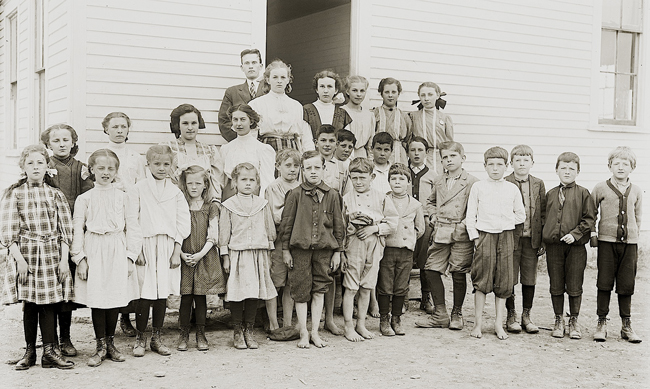B A C K T H E N
Morrill Scholars
Looking into the bright eyes of children who all have long since died compels the viewer to contemplate his or her own mortality. Life expectancy in Maine today is about seventy-nine years. In 1900 it was forty-seven, but this was less on account of people dying in their forties than it was of infant and childhood deaths.
In 1900 one in eight Maine babies died under age one, and 20 percent of all deaths occurred before age twenty. Children died of birth complications, of infectious diseases, and of diseases from poor sanitation. The leading cause of death for all ages was tuberculosis. Other killers included influenza, scarlet fever, smallpox, acute pneumonia, cholera, typhoid, and diphtheria. The 1918 Spanish influenza killed five thousand Mainers.
Changing the subject, most teachers were unmarried because a male teacher could not support a wife and family on the low pay, and female teachers who married had to resign. One explanation given is that teaching was one of the few professions open for single rural women. Another is that the marriage of a female teacher would give rise to speculation about her sexuality among her scholars. Or that a married female teacher would likely soon be leaving due to pregnancy.
Text by William H. Bunting from Maine On Glass. Published by Tilbury House Publishers, 12 Starr St., Thomaston, Maine. 800-582-1899.
Maine On Glass and prints of the photographs are available through the Penobscot Marine Museum: PenobscotMarineMuseum.org.

